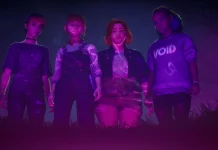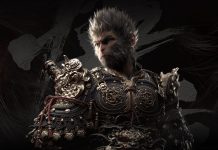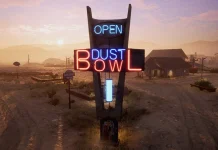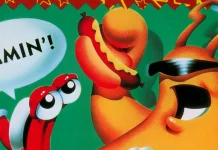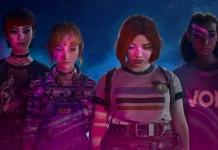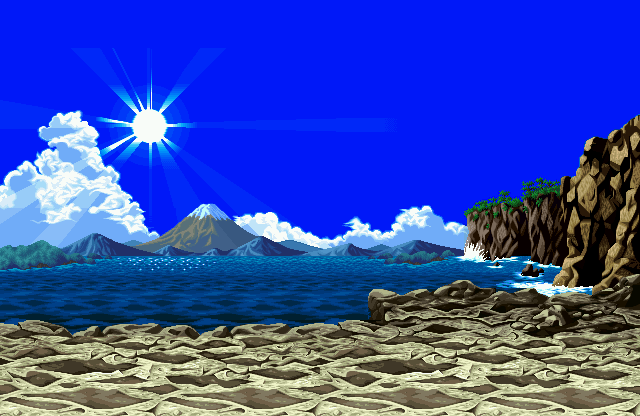Samurai Shodown is a fighting game series, with spin-offs in other styles, created by SNK. The debut game, from 1993, was one of the biggest hits of its time, winning awards and establishing the franchise as one of the most important in the genre.
In general, the plots of Samurai Shodown are set in 18th century Japan. Several characters are inspired by real people, events and periods in the country, such as the Tokugawa Shogunate, for example. Despite the inspiration in the real world, there is also fantasy, with foreign characters who could hardly be in Japan at that time, creatures and supernatural powers.
The series is known for portraying and projecting elements of Japanese culture abroad like few others. Unlike games aimed at the American market, in which the general design is Westernized, Samurai Shodown uses voice acting, music and instruments typical of Japan, in addition to the plots and characters.
Throughout the main fighting series, more than eighty playable characters have been introduced. Among the most recognized are Haohmaru, Nakoruru and the villain Amakusa, present since the first game.
Early era

The debut was with Samurai Shodown, released in 1993 and that competed directly with two big names in fighting games: Mortal Kombat and Street Fighter II. It set the dominant tone for the series, with a strong focus on Japanese culture and technical and bloody fights, quickly gaining prominence and defining some of the most important names, such as Haohmaru and Amakusa.
In the plot, fighters from various parts emerge to fight a great evil force that appeared, when Amakusa revives after a demonic pact in search of revenge against his killers.
The sequel came the following year. Samurai Shodown II takes place one year after the events of the original game, with a new threat in the form of Mizuki Rashojin, a vengeful spirit who possesses a priestess. Overall, it was an improvement on the first game, with some new mechanics and maintaining the slightly cartoonish tone.
A small change occurred with Samurai Shodown III: Blades of Blood, from 1995. The third game takes place between the events of the first two, with the journey of a young man with partial memory loss, Shizumaru Hisame. The characters and scenarios were redesigned, making the series darker and less comical than the previous installments.
The change, however, did not have the expected effect, and it was the Samurai Shodown with the worst reception to date. With Samurai Shodown IV: Amakusa's Revenge, from 1996, SNK took a step back and got closer to the originals in design. In the plot, Amakusa once again tries to get revenge, this time by controlling an evil castle and resurrecting the soul of Zankuro Minazuki, with much more power.
New styles and 3D

By 1997, Samurai Shodown had established itself as one of SNK's greatest franchises and was beginning to diversify. Shinsetsu Samurai Spirits: Bushidou Retsuden – better known as Samurai Shodown RPG – was the series' first foray into another style.
Following events between the first two games, it blends elements of traditional RPGs like Final Fantasy with fighting game controls. Exclusive to the Japanese market, it was never translated into English, and only in 2023 did it receive a fan-made patch. The unofficial translated title was "Samurai Shodown: Tales of the Bushido".
The focus remained on fighting, and in late 1997, Samurai Shodown 64 arrived exclusively for the Hyper Neo-Geo 64 arcade, as the first with 3D graphics in the series. Some characters returned, but the plot had a new villain: Yuga the Destroyer. In October of the following year, the direct sequel Samurai Shodown 64: Warriors Rage was also released as an arcade exclusive, again with Yuga as the main antagonist.
In 1998, the series came to handhelds with Samurai Shodown!, a NeoGeo Pocket exclusive title, a cartoonish conversion of Samurai Shodown IV. The following year, Samurai Shodown! 2 did the same, but based on Samurai Shodown 64: Warriors Rage, with the addition of some characters.
The PlayStation received Samurai Shodown: Warriors Rage, released in late 1999. Despite the name, it had no relation to the 1997 arcade game; the game takes place 20 years after the events of the beginning of the series, with a plot involving the rescue of Rimururu.
The Dreamcast had one of the most peculiar titles in the series with the exclusive ナコルル~あのひとからのおくりもの~. It is a visual novel centered on Nakoruru, published by Kool Kizz. Without translation into other languages, it had an unofficial patch in English many years later, with the title "Nakoruru - The Gift She Gave Me".
Fifth chapter and hiatus

The fifth game in the main line of the story came seven years after the previous one, with SNK's restructuring with Yuki Software. In Samurai Shodown V, the plot takes place two years after the events of the original Samurai Shodown, focusing on a new protagonist named Yoshitora Tokugawa who, along with other warriors, must face the rebellion of his former mentor Gaoh Kyogoku Hinowanokami.
In 2004, SNK released Samurai Shodown V Special, an improvement on the previous game, with the continuation of the story and several small changes, including the return of old bosses such as Amakusa, Zankuro and Mizuki Rashojin. Part of the design was redone, with the participation of artist Satoshi Ito (also from Samurai Shodown III), but the most impactful change was the introduction of the Zetsumei Ōgi, a type of execution that can occur in the middle of fights, with a rather gory look even for the series' standards. The AES (console) version of the game was censored at release with changes to moves, screams, and graphics.
SSVS was the last released for the Neo Geo. The two parts were the second largest cartridges for the system, with 708 megabits (along with Metal Slug 3 and Metal Slug 5, and behind only The King of Fighters 2003, 716 megabits).
Mobile e compilations

While the series did not have any major changes in the main line, Japan did receive some exclusive versions, distributed by mobile internet providers. Samurai Shodown Mobile was released through iMode Mobile in 2005; the same year, the sequel Samurai Shodown Mobile II came out, also via iMode.
The third would be Samurai Shodown Mobile III, the last of the original mobile line, released in 2006 through the EZweb service.
In 2005, Yuki made its second game in the main line, Samurai Shodown VI. It brought back several characters and introduced some new ones. The plot is almost the same as Samurai V, but developed in an alternate universe, in an unknown year in the Tenmei period (between 1781 and 1789), and with a new tournament of global scope. It mixes 3D elements with 2D sprites. One of the newcomers, Iroha, gained popularity in Japan, to the point of almost having her own game for Nintendo DS in 2006, but this was eventually canceled1Unseen64 - Denshi Maid Techou: Koi no Iroha [Nintendo DS – Cancelled].
In 2008, two new games were released. Samurai Shodown Sen is set between the previous "Rage" games, in the year 1791, with 24 playable characters, more than half of which are new. The plot involves the veteran of the American Revolution, Golba, who tries to start a world revolution. The arcade version was called "Samurai Shodown: Edge of Destiny".
Samurai Shodown Anthology is a compilation for PlayStation 2, PSP and Wii, with the first six games in the series – but without Samurai Shodown V Special.
Samurai Shodown Slash, from 2014, marked the return of the series to mobile devices, this time for Android and iOS, with a mix of fighting and infinite runner, free to play. It was discontinued in 2016. In 2020, another release for the systems, Samurai Shodown - The Legend of Samurai, with the Samurai Shodown franchise as a backdrop, but this time playable in MMORPG elements.
Reboot

In 2019, SNK decided to reboot the franchise with Samurai Shodown, a main game in a style similar to that of modern The King of Fighters. Samurai Shodown is set in the period between SSV and the original SS, in 1787. Shizuka Gozen, the spirit of a young girl who is possessed Yomi – labeled as Eternity in the game itself – threatens to destroy Japan. Warriors from all over the country and beyond gather to investigate and defeat the evil forces.
The following year, the Samurai Shodown Neo Geo Collection was released, featuring all the main previous chapters in the series, as well as the Samurai Shodown V Perfect version, an improvement of SSV Special.

